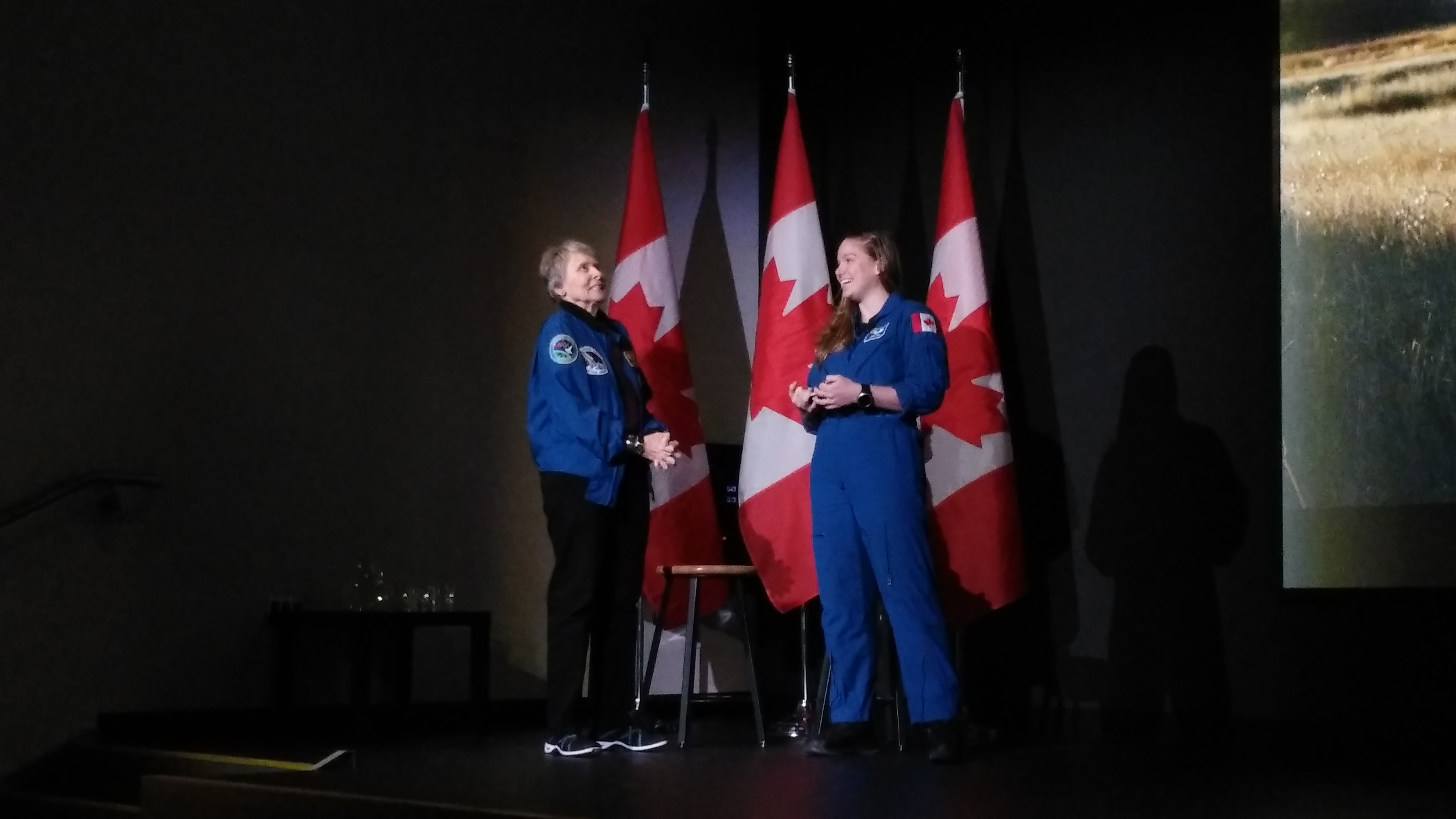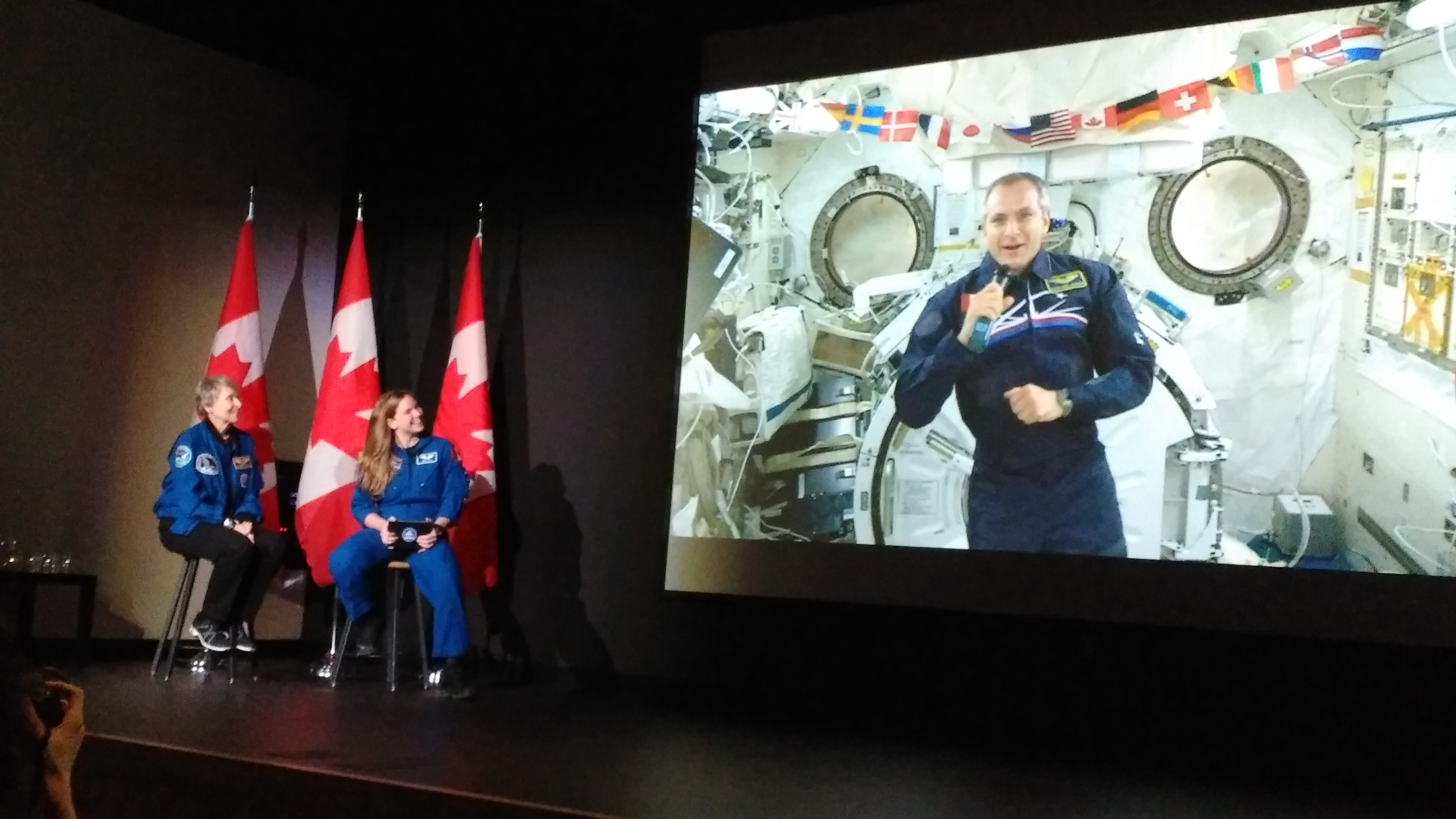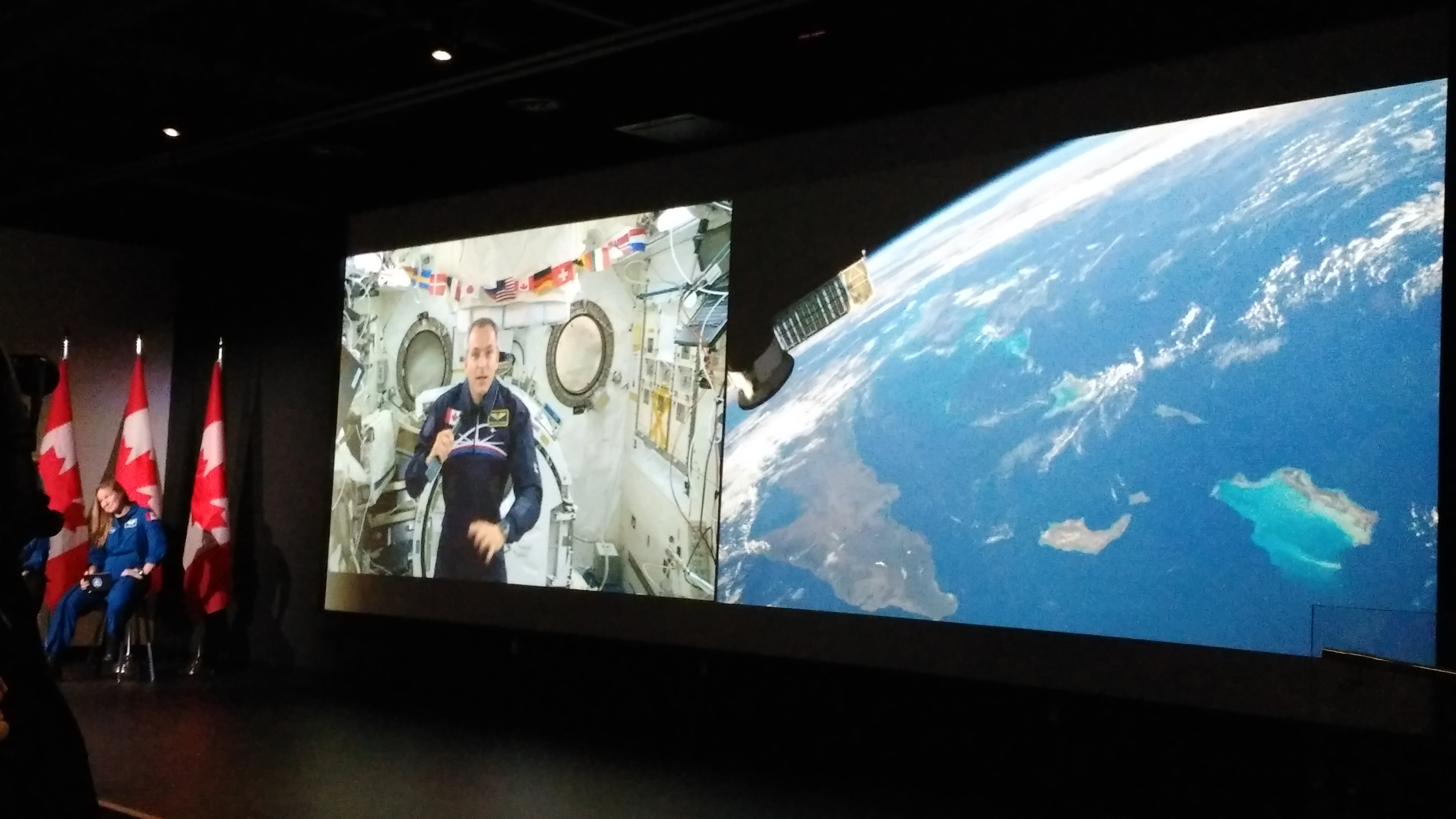Canada's First Woman in Space Reflects on the Milestone Year That Is 2019

OTTAWA, Ontario — Neurologist, astronaut, wildlife photographer, nonprofit founder, public speaker, inspirer of countless children for a generation — is there anything that Roberta Bondar can't do?
Canada's first female astronaut in space made an appearance Tuesday (Jan. 22) in front of 500 wildly excited children at the Canada Science and Technology Museum here in Ottawa.
Yesterday was already a special day in Bondar's life history — the 27th anniversary of her STS-42 shuttle spaceflight in 1992 — but it was made more unique when Bondar and Canadian astronaut Jenni Sidey-Gibbons spoke live to David Saint-Jacques, a Canadian astronaut on a half-year mission on the International Space Station. [Happy New Year from Space! Astronauts Ring in 2019 from Orbit]
The year 2019 also marks Canada's 35th anniversary of sending astronauts into space, which officially takes place in October during the anniversary of Marc Garneau's founding flight.
"We have very few opportunities to put human beings in space," Bondar told Space.com. "Obviously, we want to have more opportunities for women, because there have been a lot of men who went into space and on multiple trips, and not so much for women. But I'm hoping that somebody like Jenni will go to the moon and be the first Canadian on the moon — that would be wonderful."
The dual anniversaries carried weight with Sidey-Gibbons, who was hired by the Canadian Space Agency in 2017 (along with Joshua Kutryk) and is in the last year of her astronaut candidate training. Fellow Canadian astronaut Jeremy Hansen is overseeing the training schedules of the entire 2017 astronaut class, including NASA astronauts.
"It's just such an interesting time to be involved in space, but beyond that, if you think about the lineage and the history of Canada as a spacefaring nation, it's incredible," Sidey-Gibbons told Space.com. "Even just speaking about it now, I get goosebumps about what space can do. And the opportunities that lie ahead of us are going to be pretty outstanding as well. I mean, commercial crew vehicles coming online, hopefully this year with crewed missions, and maybe, going back to the moon. How exciting would that be for Canada?"
Get the Space.com Newsletter
Breaking space news, the latest updates on rocket launches, skywatching events and more!
Bondar is once again pushing science forward at age 73, a time when many people settle for retirement. A few times a year, Bondar flies to remote areas in Kenya, Florida and other locations to document migratory bird populations. (Her foundation nicknames her #RoBIRDa on Twitter.) As Bondar takes pictures of these birds on Earth, Saint-Jacques will document their migratory paths from orbit, in a partnership overseen by the Roberta Bondar Foundation.
The research program's goal is to watch the birds as they move from breeding sites, along migratory flight paths and into the regions where they hang out during the nonbreeding season. Much of those paths are under threat, as ecosystems fall prey to climate change, human construction and other issues. The pictures from ground and space will together go in a traveling exhibit that will be released sometime after Saint-Jacques' return from space later this year.

A milestone year
When Bondar flew into space in 1992, the air was thick with milestones in Canada. It was the 125th year of the country's first colonies unifying into a federal state (a precursor to the modern Canada). It was year for two Canadians (Bondar and Steve MacLean) going to space. The Canadian Space Agency opened shiny new headquarters just outside of Montreal that year. Also, Canada accepted four new astronauts into its space program, including Chris Hadfield (who later commanded the International Space Station) and Julie Payette (a two-time flier who became Canada's head of state, the governor general).
Bondar visited the museum here in late June 1992 to inaugurate its new Canada in Space exhibit — in fact, my parents pulled me out of school to see her. Walking through the exhibit was like seeing a who's who of how Canada got to space. It featured several models of the Canadarm robotic arm, a simulated shuttle payload bay, models of early Canadian satellites and rockets, and tons of 1990s-exciting interactive exhibits (such as rocket sites that lit up at the touch of a button).
International partners were shown off, too. The 1992 exhibit included the real-life Apollo 7 spacecraft that went into space in 1968 to prepare NASA for future moon missions. (It was on loan from the Smithsonian, and since 2004 it has resided in the Frontiers of Flight Museum in Dallas.) Also of note was a huge Rand McNally Earth globe just inside the entrance to the exhibit, underneath models of spacecraft and a "Star Trek" Enterprise. There were globes like this in several museums, staff told me.

Memories of the exhibit and the crowds in 1992 still resonated with Bondar decades later. "The idea of people greeting me when I came back from space, in the old building, was really tremendous. And now we have a new building — and new astronauts," Bondar said.
You can't see the exhibit today — it was dismantled during a two-year-long museum shutdown to remove asbestos and update the exhibits — but there are still some mentions of spaceflight among the exhibits in the new building. One area celebrates the science of the very big and the very small, and includes microscopes and telescopes to show the scale of nature and how we observe it.
There's also a space presence growing at another of the same organization's museum just a few minutes' drive away, at the Canada Aviation and Space Museum. Today, visitors can see a real-life Canadarm robotic arm (no humdrum, light-up models for this generation of kids), among other space-flown artifacts. In February, a new exhibit there will celebrate the role of medicine in space.
Follow us on Twitter @Spacedotcom and on Facebook. Original article on Space.com.
Join our Space Forums to keep talking space on the latest missions, night sky and more! And if you have a news tip, correction or comment, let us know at: community@space.com.

Elizabeth Howell (she/her), Ph.D., was a staff writer in the spaceflight channel between 2022 and 2024 specializing in Canadian space news. She was contributing writer for Space.com for 10 years from 2012 to 2024. Elizabeth's reporting includes multiple exclusives with the White House, leading world coverage about a lost-and-found space tomato on the International Space Station, witnessing five human spaceflight launches on two continents, flying parabolic, working inside a spacesuit, and participating in a simulated Mars mission. Her latest book, "Why Am I Taller?" (ECW Press, 2022) is co-written with astronaut Dave Williams.









